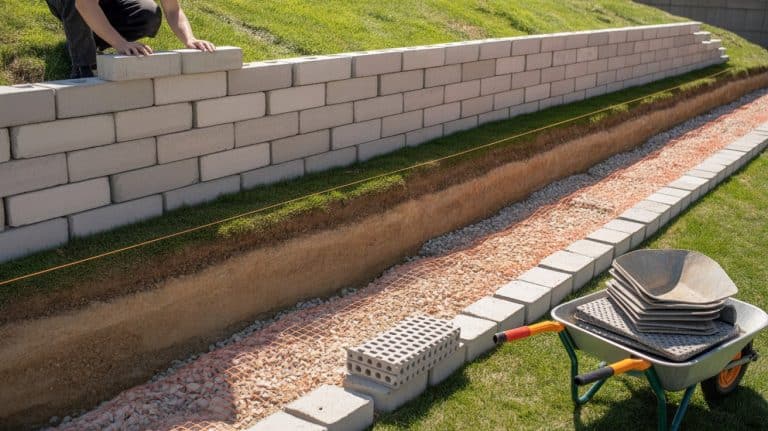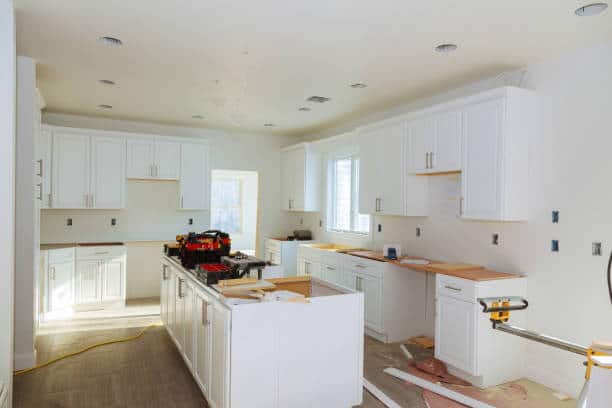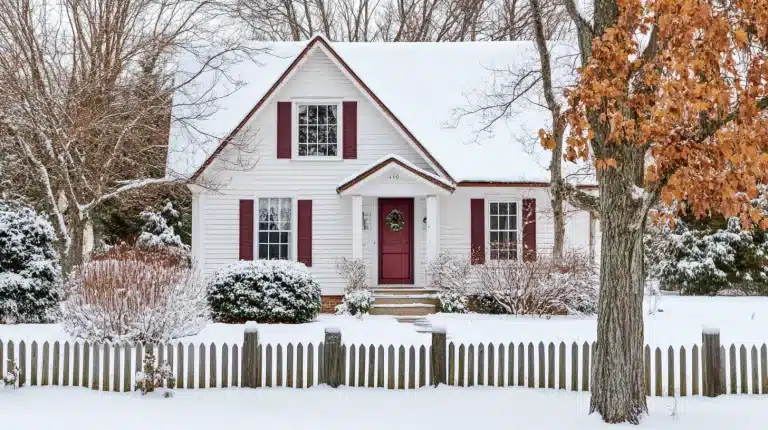Best Paint for Furniture: Clear Answers, Better Results
Have you ever looked at a dull piece of furniture and wished you could give it a fresh look? You’re not alone. Many homeowners stare at old dressers, chairs, and tables, unsure of what paint might work best for a quality finish.
The right paint can turn a forgotten piece into the star of your room. But with so many options—latex, chalk, milk, acrylic, oil-based—how do you choose?
I once painted an old cabinet with the wrong type of paint. Within weeks, it chipped, and I had to start over. This mistake taught me a valuable lesson about furniture paints.
Want to avoid my errors and get a finish that lasts for years? Let’s dig into the best paints for furniture and how to pick the perfect one for your project.
Types of Paints for Furniture
Choosing the right paint can make or break your furniture makeover project. Here’s what you need to know about each option.
1. Acrylic Paint
Key Benefits: Quick-drying water-based formula with low odor, excellent color retention, and easy soap-and-water cleanup.
Best For: High-traffic furniture like dining tables and kitchen chairs. Ideal for modern pieces requiring smooth, vibrant finishes.
Durability: Creates a hard, scratch-resistant surface that resists yellowing. Seal with water-based polyurethane for maximum protection.
2. Chalk Paint
Key Benefits: Minimal preparation with no sanding or priming in most cases. Ultra-matte finish with excellent coverage in just 1-2 coats.
Best for: Vintage or farmhouse aesthetics, ornate pieces, and projects that require an authentically aged appearance.
Application: Beginner-friendly with thick consistency. Seal with wax or a specialized topcoat for longevity and your desired sheen level.
3. Oil-Based Paint
Key Benefits: It is extremely durable and has superior resistance to water, stains, and chemicals. It also has exceptional adhesion to difficult surfaces.
Finish Quality: Self-levels as it dries, eliminating brush strokes for glass-like smoothness with rich color depth.
Drawbacks: It requires a long drying time (6-8 hours between coats), a stronger odor, and mineral spirits for cleanup.
4. Spray Paint
Key Benefits: It provides the most even, streak-free finish. It easily reaches intricate details and crevices that brushes can’t access.
Best For: Furniture with spindles or ornate details, metal pieces, wicker, and projects requiring specialty finishes.
Application: Use in well-ventilated areas. Apply multiple thin coats rather than one thick coat for professional results.
5. Milk Paint
Key Benefits: Natural, eco-friendly formula with zero VOCs. Made from milk protein, lime, and natural pigments.
Best For: Authentic vintage looks with natural chipping and flaking that mimics years of wear. Adjustable consistency from wash to solid.
Application: Works best on raw wood. Seal with hemp oil, tung oil, or beeswax to enhance aged patina while providing protection.
6. Latex Paint
Key Benefits: This versatile water-based formula is available in any color and multiple sheens. It works on most furniture materials and is easy to clean.
Application: Quick drying (1-2 hours between coats). Choose premium “cabinet and trim” formulas for better furniture durability.
Best Practices: Clean, sand, and prime surfaces properly. Seal high-use pieces with water-based polyurethane for lasting results.
Top Paint Brands for Furniture
Quality paint makes all the difference in furniture transformation. Here are five top brands that professionals and DIYers consistently recommend.
1. Annie Sloan Chalk Paint

Annie Sloan pioneered chalk paint technology, creating a product that revolutionized furniture painting by eliminating most prep work. Its luxurious matte finish and exceptional coverage have made it the gold standard for vintage-inspired makeovers.
- No primer or prep work required for most surfaces
- Excellent coverage with typically just 1-2 coats needed
- Low VOC content with minimal odor
- Easily distressed for authentic vintage looks
Best For: Antique furniture restoration, French country style pieces, and projects requiring authentic distressed finishes.
2. Rust-Oleum Chalked Ultra Matte Paint

Rust-Oleum offers an affordable alternative to premium chalk paints without sacrificing quality. This budget-friendly option provides the same velvety finish and adhesion properties at a fraction of the cost of boutique brands.
- Dries to the touch in just 30 minutes
- Can be applied to wood, metal, ceramic, and more
- Available in 30+ contemporary colors
- Built-in topcoat technology for improved durability
Best For: Budget-conscious DIY projects, first-time furniture painters, and quick weekend makeovers.
2. Benjamin Moore Advance

Benjamin Moore Advance combines oil-based durability with water-based convenience. This hybrid formula creates an exceptionally smooth, hard finish that rivals factory finishes while maintaining easy cleanup.
- Self-leveling formula eliminates brush marks
- Exceptional hardness once fully cured
- Water-based with low VOCs, but performs like oil paint
- Highly resistant to household stains and scratches
Best For: Kitchen cabinets, dining tables, and high-end furniture requiring a flawless, professional finish.
3. Behr Premium Plus Ultra

Behr’s all-in-one formula combines paint and primer for exceptional coverage and adhesion. Its stain-blocking technology makes it perfect for covering dark wood or existing finishes without extensive prep work.
- Paint and primer in one for better coverage
- Stain-blocking technology covers previous colors
- Mildew-resistant formula for humid environments
- Available in unlimited colors with multiple sheen options
Best For: Versatile use across different furniture types, covering dark woods, and makeovers requiring dramatic color changes.
4. Sherwin-Williams ProClassic

ProClassic has earned its reputation among professionals for extraordinary durability and application properties. This premium acrylic-alkyd formula creates a furniture-grade finish that withstands years of heavy use.
- Superior flow and leveling for a near-perfect finish
- Excellent block resistance prevents sticking
- Resistant to yellowing, maintaining color integrity
- Creates a hard, shell-like protective surface
Best For: High-traffic furniture like dining sets, kitchen islands, desktops, and heirloom pieces used daily.
Factors to Consider When Choosing Paint for Furniture
1. Type of Furniture Material
- Material Compatibility: Different paints are formulated for specific surfaces—wood, metal, plastic, or laminate.
- Surface Preparation: Wood needs sanding, metal requires rust removal, and plastic may need special primers.
- Absorption Rate: Porous materials require more paint; non-porous surfaces need adhesion promoters.
- Flexibility Needs: Materials that expand and contract need more flexible paint formulations.
- Previous Finishes: Existing coatings impact adhesion and may require removal or specific primers.
2. Durability & Longevity
- Traffic Exposure: High-use pieces need harder, more durable finishes than decorative items.
- Cleaning Resistance: Kitchen and children’s furniture needs paint that withstands frequent cleaning.
- Chemical Contact: Surfaces exposed to alcohol or cleaners require resistant formulations.
- Impact Resistance: Areas prone to bumps need paints that resist chipping when impacted.
- Environmental Factors: Sunlight and humidity exposure require specialized formulations.
3. Finish Options
- Matte: Hides imperfections, harder to clean, creates a casual/vintage look.
- Satin: Balanced sheen, good cleanability, versatile for most furniture.
- Semi-Gloss: More reflective, highly cleanable, good for kitchens and high-use areas.
- High-Gloss: Very reflective, shows imperfections, creates a dramatic/modern look.
- Specialized: Distressed, metallic, or textured finishes for unique effects.
4. Ease of Application
- Skill Level: Chalk paints are beginner-friendly; lacquers require experience.
- Tool Requirements: Some paints work best with specific brushes, rollers, or sprayers.
- Self-Leveling: Better quality paints minimize brush strokes by settling as they dry.
- Coverage Efficiency: Premium paints often need fewer coats despite higher cost.
- Technique Compatibility: Some paints allow special techniques like distressing or dry brushing.
5. Drying Time
- Touch-Dry: When the surface feels dry (30 minutes to 24 hours).
- Recoat Time: When another layer can be applied without issues.
- Handling Time: When furniture can be gently used without damage.
- Cure Time: When paint reaches maximum hardness (days to weeks).
- Environmental Impact: Humidity and temperature significantly affect all drying stages.
Common Mistakes to Avoid When Painting Furniture
1. Skipping Sanding or Priming
Failing to perform proper surface preparation results in poor adhesion and premature peeling.
Glossy surfaces require scuffing to ensure paint bonds effectively, while skipping primer can allow previous colors to bleed through. Surface imperfections remain visible without adequate sanding, ruining your finished look.
2. Using the Wrong Paint for the Material
Incompatible paint formulations cause warping, premature deterioration, and rapid wear on high-use surfaces.
Metal requires specialized paints for protection against rust, while high-touch areas need durable finishes. Interior formulas used on outdoor pieces will fail quickly when exposed to the elements.
3. Not Allowing Proper Drying Time
Rushing between coats creates texture problems and permanent marks from objects placed on tacky surfaces.
Furniture used before full curing develops scratches easily, while premature topcoat application causes clouding or bubbling. Humidity and temperature often extend drying times beyond the recommended package times.
4. Overloading with Paint
Thick coats create drips, runs, and visible brush marks that ruin professional-looking results.
Excessive paint obscures decorative details and significantly extends drying time. Multiple thin layers provide better coverage and adhesion than a single thick coat that forms unsightly buildup on edges.
Conclusion
Converting furniture with paint is one of the most rewarding and cost-effective DIY projects you can tackle. With the right paint choice, proper preparation, and careful application, even novice painters can achieve professional-looking results.
Remember to match your paint to both your furniture material and its intended use. Take time to prepare surfaces properly, apply thin coats, and allow adequate drying time between steps. Quality brushes and tools make a significant difference in your final outcome.
Whether you’re creating a bold statement piece with vibrant chalk paint or refinishing a family heirloom with durable oil-based enamel, the perfect paint exists for your project.
Now that you’re armed with expert knowledge about furniture paints, it’s time to change those tired pieces into stunning focal points in your home!







